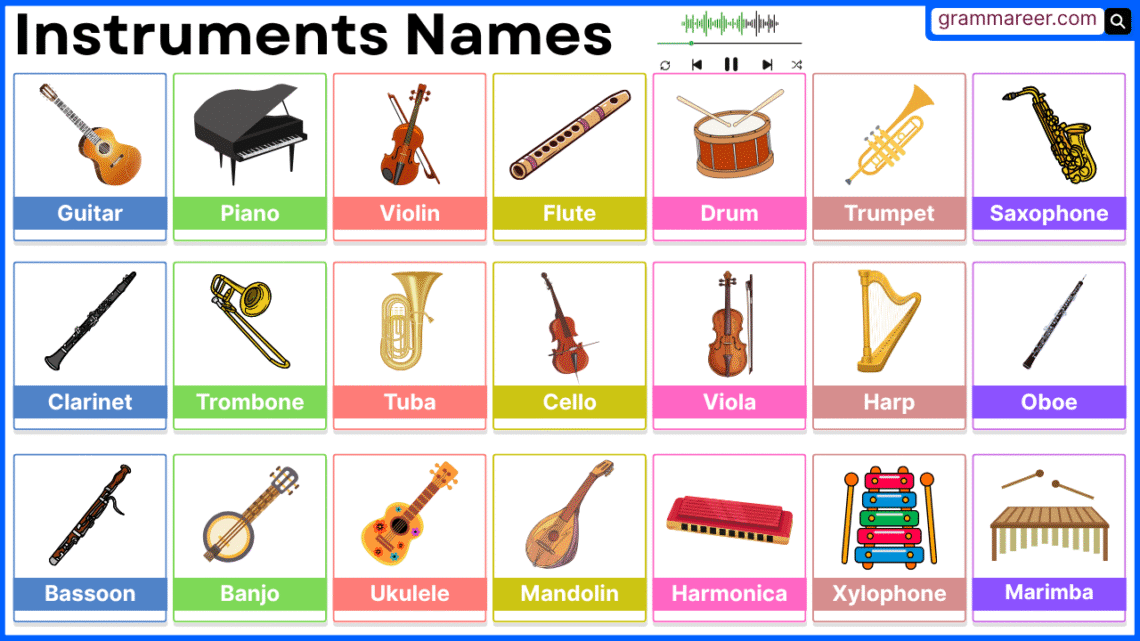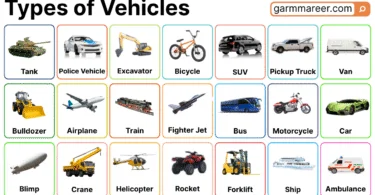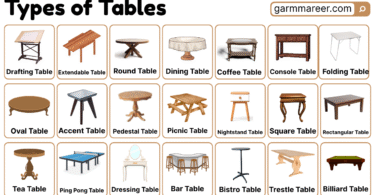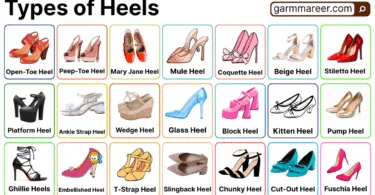Learning musical instrument names helps learners describe instruments accurately and understand music terms in English. This blog post helps you know which instrument makes what kind of sound. It organizes common, traditional, and orchestra instruments into clear types, giving a full picture of their names and uses. Designed for readers who want exact English names, it also links each name to how the instrument works or sounds.
Table of Contents
Musical Instruments Names and Pictures
Learning musical instrument names in English helps students recognize instruments, describe sounds, and build vocabulary related to music. Below is a list of instruments commonly used worldwide.
Mandolin: A mandolin is a small string instrument with a bright sound, often used in folk and classical music.
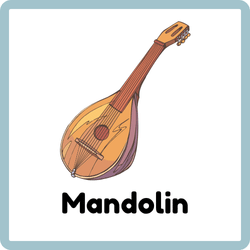
Banjo: The banjo makes lively, twangy tones. It is popular in country, folk, and bluegrass music, bringing cheerful energy.
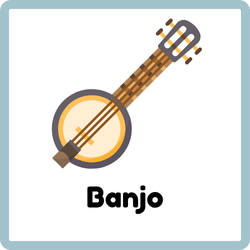
Saxophone: A saxophone is made of brass but played with a reed, giving it a smooth jazzy sound in bands and orchestras.
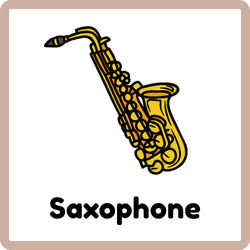
Harmonica: The harmonica is tiny and portable. Blowing and drawing air creates music, making it loved in blues and folk traditions.
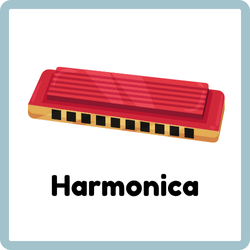
Bassoon: A bassoon is a large woodwind instrument with a deep, warm voice that supports melodies in orchestras and ensembles.
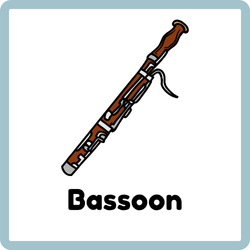
Trombone: The trombone has a sliding tube instead of keys. It plays bold notes, often used in jazz and marching band performances.
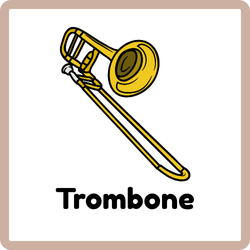
Drum: A drum keeps rhythm in music. By striking it with sticks or hands, players create beats that guide the whole song.
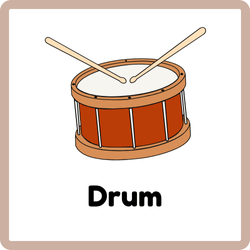
Viola: The viola looks like a violin but is slightly larger. Its rich, warm tone fills the middle voice of an orchestra.
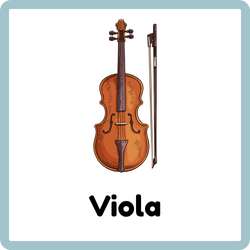
Xylophone: The xylophone has wooden bars. Striking them with mallets makes clear, bright sounds, often used in learning music and bands.

Cello: The cello produces deep and emotional sounds. Players sit while performing, and it shines in classical pieces and modern music.
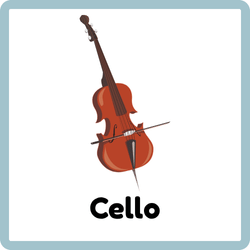
Piano: The piano is a versatile instrument. Pressing its keys makes both melody and harmony, used in almost every music style worldwide.
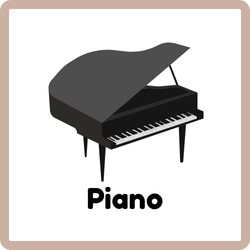
Trumpet: A trumpet is a brass instrument with a strong and brilliant tone. It plays lead parts in jazz, classical, and marching music.
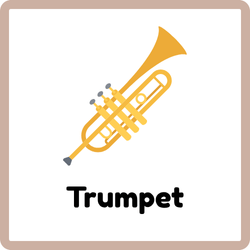
Harp: The harp is tall with many strings. Its gentle plucking sound creates dreamy music often linked with peace and relaxation.
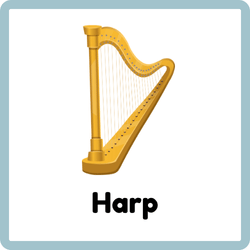
Oboe: The oboe uses a double reed. It has a clear, piercing tone and is often used to set the tuning in orchestras.
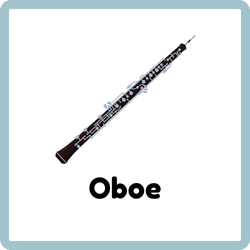
Ukulele: The ukulele is small and has four strings. It is easy to learn and gives bright, cheerful island-style sounds.
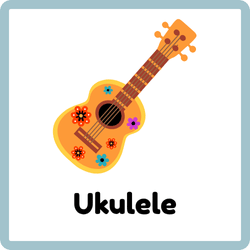
Clarinet: The clarinet is a woodwind instrument. Its wide range allows it to play smooth melodies in jazz, folk, and classical groups.
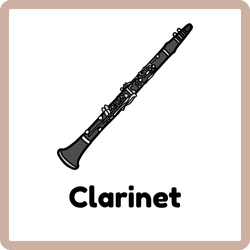
Tuba: The tuba is the largest brass instrument. Its deep booming notes support harmony and add power in marching bands and orchestras.
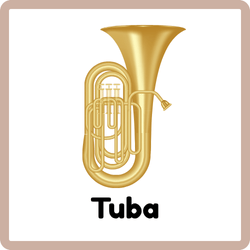
Violin: The violin is one of the most popular instruments. Its expressive voice plays leading parts in classical, folk, and modern music.
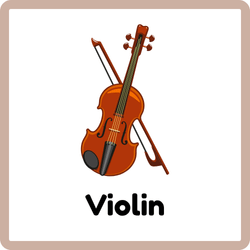
Flute: The flute makes soft and airy tones by blowing across a hole. It is graceful in both orchestral music and solo songs.
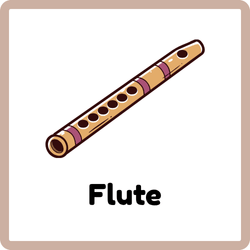
Guitar: The guitar is widely loved. With six strings, it is used for strumming or picking in rock, folk, blues, and pop music.
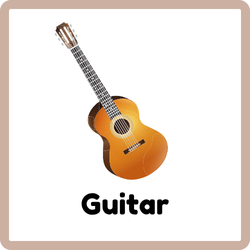

Most Popular Musical Instruments Names
The instruments below are widely used across music classes, bands, and performances. They’re known for their accessibility and popularity among beginners.
- Guitar
- Piano
- Drums
- Violin
- Flute
- Saxophone
- Keyboard
- Trumpet
- Clarinet
- Ukulele
Types of Musical Instruments and their List
Musical instruments are grouped by how they create sound. Below is a categorized list with examples to help you understand the different types.
String Instruments
These produce sound by vibrating strings when bowed or plucked.
- Violin
- Guitar
- Cello
- Harp
- Viola
- Double Bass
- Banjo
- Ukulele
- Sitar
- Mandolin
Wind Instruments
These use airflow to produce tones, often through a reed or open hole.
- Flute
- Clarinet
- Oboe
- Bassoon
- Piccolo
- Recorder
- Harmonica
- Pan Flute
- Bagpipes
Percussion Instruments
Percussion instruments are struck, shaken, or scraped to make sound.
- Drum
- Tambourine
- Maracas
- Triangle
- Timpani
- Xylophone
- Conga
- Bongo
- Djembe
- Cymbals
Keyboard Instruments
These produce sound when keys are pressed, triggering strings, air, or electronic signals.
- Piano
- Organ
- Keyboard
- Accordion
- Synthesizer
Electronic Instruments
These rely on amplification or digital generation of sound.
- Electric Guitar
- Synthesizer
- Drum Machine
- Electronic Keyboard
- Digital Piano
Brass Instruments
Sound is created by vibrating lips into a cup-shaped mouthpiece.
- Trumpet
- Trombone
- French Horn
- Tuba
- Cornet
- Euphonium
Traditional Musical Instruments from Around the World
Different regions have developed traditional instruments used in ceremonies, folk music, and cultural events. Below is a regional breakdown.
Asian Instruments
Asian instruments often use bamboo, strings, or animal skin. Below is a list by country or culture.
- Sitar (India)
- Erhu (China)
- Shamisen (Japan)
- Guzheng (China)
- Tabla (India)
- Dizi (China)
- Taiko Drum (Japan)
African Instruments
African instruments are mostly percussion-based and reflect strong rhythm and storytelling traditions.
- Djembe
- Kora
- Balafon
- Udu
- Talking Drum
- Shekere
- Ngoma
European Instruments
European instruments are found in both classical orchestras and traditional folk music.
- Accordion
- Bagpipes
- Hurdy-Gurdy
- Lute
- Mandolin
- Violin
- Zither
Middle Eastern Instruments
These instruments produce microtonal scales and have a distinctive sound structure.
- Oud
- Qanun
- Ney
- Darbuka
- Riq
- Santur
Musical Instruments Used in Orchestras
Orchestras include a variety of instruments from all families. Below is a comprehensive list of those commonly used.
- Violin
- Viola
- Cello
- Double Bass
- Flute
- Oboe
- Clarinet
- Bassoon
- Trumpet
- Trombone
- Tuba
- French Horn
- Timpani
- Cymbals
- Harp
Musical Instrument and their Sounds they Produce
Musical instrument names, the sounds they produce and Uses .
| Instrument | Sound | Use |
|---|---|---|
| Piano | Melodic, harmonic tones | Solo, accompaniment, composition, orchestras |
| Violin | Smooth, expressive, and emotional | Classical, folk, orchestral music |
| Guitar | Strumming or plucking tones, mellow to bright | Pop, rock, classical, folk |
| Flute | Airy, high-pitched, and light | Orchestral, solo, folk, film scores |
| Drum | Rhythmic, deep beats | Rhythm section in all genres |
| Trumpet | Bright, brassy, sharp | Jazz, classical, marching bands |
| Cello | Warm, rich, and deep | Orchestras, chamber music, solos |
| Clarinet | Mellow, woodwind tone | Classical, jazz, band music |
| Trombone | Sliding brass tone with variable pitch | Jazz, orchestras, brass ensembles |
| Saxophone | Jazzy, soulful, rich | Jazz, pop, rock, solo performances |
| Harp | Soft, plucked, and angelic strings | Classical, Celtic, background in orchestras |
| Tambourine | Metallic jingles and finger taps | Folk, pop, rhythm section |
| Accordion | Reedy, flowing, and folk-like tone | Folk, European traditional music |
| Tuba | Deep, resonant brass sound | Bass line in orchestras and bands |
| Xylophone | Sharp, wooden, bell-like keys | Orchestral, educational, melodic percussion |
| Djembe | Crisp, varied, hand-played drum tone | African music, drum circles, fusion genres |
| Bagpipes | Continuous drone with melody | Scottish, Celtic, ceremonial music |
| Oboe | Nasal, clear, and reedy | Orchestral, chamber, solo classical music |
| Bassoon | Deep, warm, and woody | Orchestral, bass woodwind harmonies |
| Triangle | Bright, ringing, metallic | Orchestras, dramatic accents |
| Bongo Drums | High-pitched, hand-slapped rhythm | Latin music, Afro-Cuban styles |
| Double Bass | Deep, resonant string tones | Jazz, orchestras, rhythm section |
| Mandolin | Plucked, twangy, and bright | Folk, bluegrass, classical |
| Banjo | Fast, twangy, and lively | Country, folk, bluegrass |
| Harmonica | Breath-driven, bluesy and buzzing | Blues, folk, country |
| Maracas | Shaking rhythm with beads | Latin, Caribbean, rhythm section |
| Conga Drums | Bass and slap tones, hand-played | Afro-Cuban, salsa, Latin ensembles |
| Sitar | Buzzing, resonant, Eastern melodies | Indian classical, fusion, Bollywood |
| Tabla | Rhythmic, pitch-varied Indian drum tones | Indian classical, devotional music |
| Synthesizer | Electronic, varied tones and effects | EDM, pop, film scores, sound design |
| Organ | Sustained, majestic pipe tones | Church music, classical, jazz |
| Recorder | Clear, airy woodwind tones | Beginners, Baroque music, folk |
| Castanets | Clicking wooden rhythm instruments | Flamenco, Spanish dance music |
| Glockenspiel | Bell-like metallic tones | Orchestral, educational music |
| Lyre | Delicate, ancient string tones | Historical, cultural, ancient Greek music |
| Kalimba | Soft, plucked metal key tones | African music, meditative or ambient music |
| Didgeridoo | Drone, buzzing low tone | Aboriginal rituals, world music |
| Steel Drum | Melodic, metallic Caribbean tone | Calypso, reggae, Caribbean street bands |
| Fiddle | Fast-paced folk violin sound | Folk, bluegrass, Celtic music |
| Snare Drum | Crisp, sharp military-like rhythm | Marching bands, orchestras, drumlines |
| Bass Drum | Low, booming, foundational beat | Orchestras, bands, rhythm backbone |
| Cymbals | Crash, shimmering metallic sound | All genres for accents and climaxes |
| Chimes | Tinkling, celestial, wind-like | Orchestras, effects in movies, ambient |
| Clavichord | Gentle, expressive keyboard tone | Baroque and Renaissance keyboard music |
| Lute | Soft, resonant, Renaissance plucked tone | Early music, medieval & Renaissance |
| Zither | Ringing, resonant plucked strings | European folk, Chinese music, classical |
| Ocarina | Sweet, flute-like, wind-blown tone | Folk, video game music, fantasy soundtracks |
| Melodica | Breath-operated keyboard with harmonica tone | Education, reggae, experimental |
| Pan Flute | Hollow, breathy, melodic tone | Andean, folk, world music |
| Timpani | Tuned drum with deep orchestral rhythm | Classical orchestras, dramatic scoring |
FAQs about Instrument
The main types include string, wind, percussion, keyboard, brass, and electronic instruments.
Guitar, piano, and drums are most common for beginners due to ease and wide use.
No. Only specific instruments like violins, trumpets, and flutes are commonly used in orchestras.
String instruments make sound from vibrating strings. Wind instruments use air or breath to create sound.
You May Also Like

